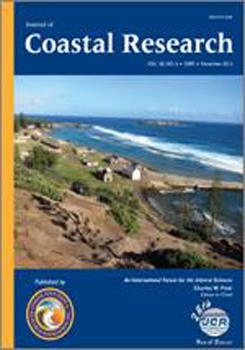Peterson, C.; Minor, R.; Gates, E.B.; Vanderburgh, S., and Carlisle, K., 2012. Correlation of tephra marker beds in latest Pleistocene and Holocene fill of the submerged Lower Columbia River Valley, Washington and Oregon, U.S.A.
Seven tephra layers in the submerged fill of the Lower Columbia River Valley (LCRV) are radiocarbon dated (0.5–13 ka in age). They are correlated to reported eruption sources in the adjacent Cascade Range volcanic arc. The tephras provide a stratigraphic framework for the transgressive depositional filling of the tidal Columbia River system (∼200 km in length). The thickest and most continuous tephra marker beds in the LCRV are from the Mount Mazama set-O eruption at 7.7 ka. The eruption source for this tephra (1–10 m thick) is confirmed by glass geochemistry and radiocarbon dating of borehole samples from depths of −13 to −38 m (North American Vertical Datum of 1988 [NAVD88]). The Mazama set-O tephra conveniently divides the depositional sequences of the Early Holocene from the Late Holocene in the deep valley fill (50–120 m axial valley depth). A much deeper tephra, at −84 m, is attributed to Mount St. Helens set-S/J eruptions at ∼13 ka, which confirms the end of the Glacial Lake Missoula Flooding in the LCRV. Late Holocene tephra marker beds in the LCRV include the Mount St. Helens set-J/P eruptions (2.5–4.0 ka), set-W/T eruptions (∼AD 1480), and an intermediate-depth tephra, attributed to a Mount St. Helens or Mount Adams eruption (∼1.3 ka). The Late Holocene tephras date the ages of tidal flats and extensive floodplains throughout the length of the LCRV. The Late Holocene marker beds provide the first widespread constraints on wetland sedimentation rates and preservation potentials for archaeology sites in the LCRV.





